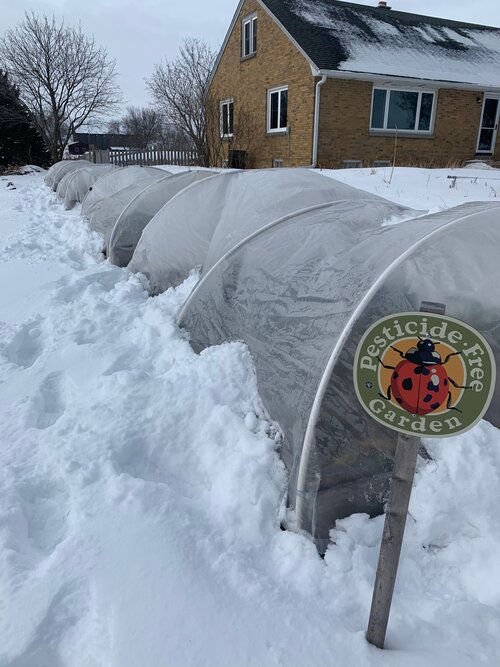Where Do You Start?
- happydayfarmhaus
- Jan 30, 2020
- 3 min read
I remember the first day I showed up to work on the farm as an apprentice. Seeing the infrastructure, the seeds, the fields… and thinking, holy cow where do you start?
Since it’s our first year, thought I’d write up a little something about what we’re focusing on in year one! Maybe they teach you these things in ag school, or your farm family gives you all this knowledge, but Bryan and I are new at all this. Which calls for numerous hours researching, finding information and trial by fire. So here you go:
Soil health. A casual scroll through your IG feed for #organicfarm and you’ll see beautiful, black, weed free soil. And getting to this point is no small feat. We’re transitioning the land from an old corn/soybean production operation to organic, so, our task now is to get the soil free of chemicals and back to it’s natural ecosystem. We planted pea/oat cover crop last summer, and now that we’re tilling it in, we’re adding organic matter. Plus we are working with Blue Ribbon Organics out of Caledonia on compost deliveries.
Equipment. Ahhhhh, I could spend hours here going through the things I’d like to have (a bigger tractor), do have (an adequate tractor), and don’t care to have (a year-round heated greenhouse). The essentials we went with were a 30hp John Deere, rototiller, discer, mulch attachment, riding lawn mower, haywagon to for a mobile chicken coop, 2 hoop houses, and a 16x12 propagation house and germination chamber. Some states have co-op programs you can rent equipment from, sadly we couldn’t find it. Friends, family and Facebook Marketplace helped up us with cost-savings. I’d love to one day manage the farm under a no-till philosophy meaning the equipment would follow suite. Up next is building our pack-shed and putting up our hoop houses.
What to grow. We needed to come up with a plan to grow things we love, as well as grow things we know others love. And balance what we could physically do between the two of us. So we plotted it out on a map (as you see below), and made a monthly plan of what was needed to accomplish this. Plus we’re also balancing this with what we have to grow. Bare land equals mud and erosion. We have lots of new grasses and prairie flowers going in this year to help with the environmental side of the equation.
How to grow it. Read through any Moses article, or Johnny’s or High Mowing article, and you’ll soon realize you can grow produce (and flowers) numerous ways. So how do you know what will work for you? You don’t! Pick something you believe in and try it. For example, I would love to try planting with soil blocks and making our own heat mats, but this year, our test-period time was spent building a chicken coop. Do I wish I could go back in time and spend our chicken coop building on produce-related work, yes. But did we need that coop, yes. Moral of the story, pick something, try it, and learn from it.
Diseases/pests. This is something in the back of my mind 24/7. Building practices on the farm that help reduce plant disease and pests are huge. With each project, I spend time learning and putting this into practice. For example, when we go to plant or water, I sterilize the equipment and wash my hands.
Attitude. Literally, I want to put up a sign over our door to the backyard that says, “positive vibes”. When you walk out the door, sometimes you don’t know what you’re walking into… did the prop house get a hole in the wall, did the chicken escape, is there standing water right where the tractor needs to go? Welp, having a positive attitude makes you feel like you accomplish anything no matter what you’re faced with.




